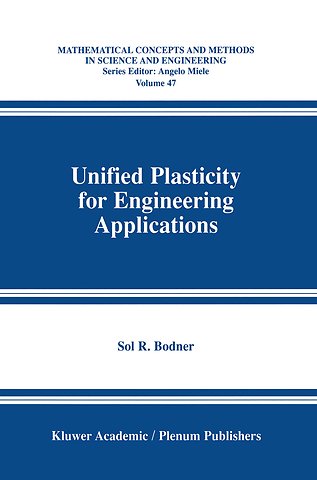Unified Plasticity for Engineering Applications
Samenvatting
Considerably simplified models of macroscopic material behavior, such as the idealization for metals of elastic-time independent plastic response with a yield (onset) criterion, have served the engineering profession well for many years. They are still basic to the design and analysis of most structural applications. In the need to use materials more effectively, there are circumstances where those traditional models are not adequate, and constitutive laws that are more physically realistic have to be employed. This is especially relevant to conditions where the inherent time dependence of inelastic deformations, referred to as "viscoplasticity", is pronounced such as at elevated temperatures and for high strain rates. Unified theories of elastic-viscoplastic material behavior, which are primarily applicable for metals and metallic alloys, combine all aspects of inelastic response into a set of time dependent equations with a single inelastic strain rate variable. For such theories, creep under constant stress, stress relaxation under constant strain, and stress-strain relations at constant rates are each special cases of a general formulation. Those equations mayor may not include a yield criterion, but models which do not separate a fully elastic region from the overall response could be considered "unified" in a more general sense. The theories have reached a level of development and maturity where they are being used in a number of sophisticated engineering applications. However, they have not yet become a standard method of material representation for general engineering practice.

